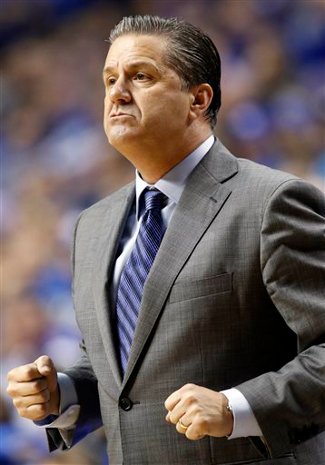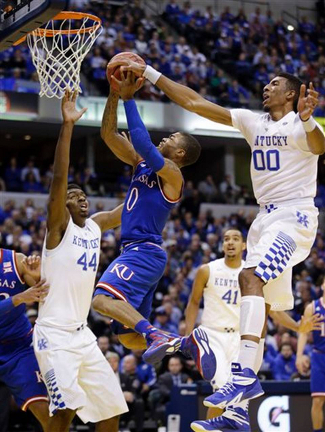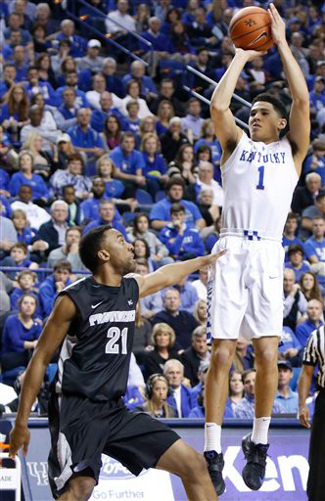#6/7 Texas Longhorns (7-0) at #1/1 Kentucky Wildcats (7-0)
Rupp Arena | Lexington, KY | Tip: 6 P.M. CT | TV: ESPN
Vegas: Kentucky -11.5 | KenPom: Kentucky, 65-55 (86%)
The buzz around this year’s Longhorn team has been strong since the moment last year’s team was knocked out in the NCAA tournament’s Round of 32. That only intensified in late April when Myles Turner decided to attend UT, and the national excitement continued to grow as the Horns notched neutral site wins over Iowa and Cal, and a true road win against UConn. As the hype train gained speed, one game was repeatedly mentioned by every announcer and publication.
After weeks of build-up, that big game is finally here. The matchup of the massive frontcourts of Texas and Kentucky is now just hours away, and although the absence of Isaiah Taylor will put a disappointing asterisk on the box score, that buzz and excitement is still in the air. Considering Taylor’s absence and the tough road environment, both Vegas and the legendary Ken Pomeroy don’t give the Longhorns much of a chance. Still, college hoops writers have pointed out all week that if any team is going to match up with this Kentucky juggernaut, the Longhorns are your first pick.
By the numbers

John Calipari is pumped about this year’s UK team
(Photo credit: James Crisp/Associated Press) 
Marcus Lee is one of many UK shot blockers
(Photo credit: Darron Cummings/Associated Press) 
Devin Booker is a three-point marksman
(Photo credit: James Crisp/Associated Press) |


